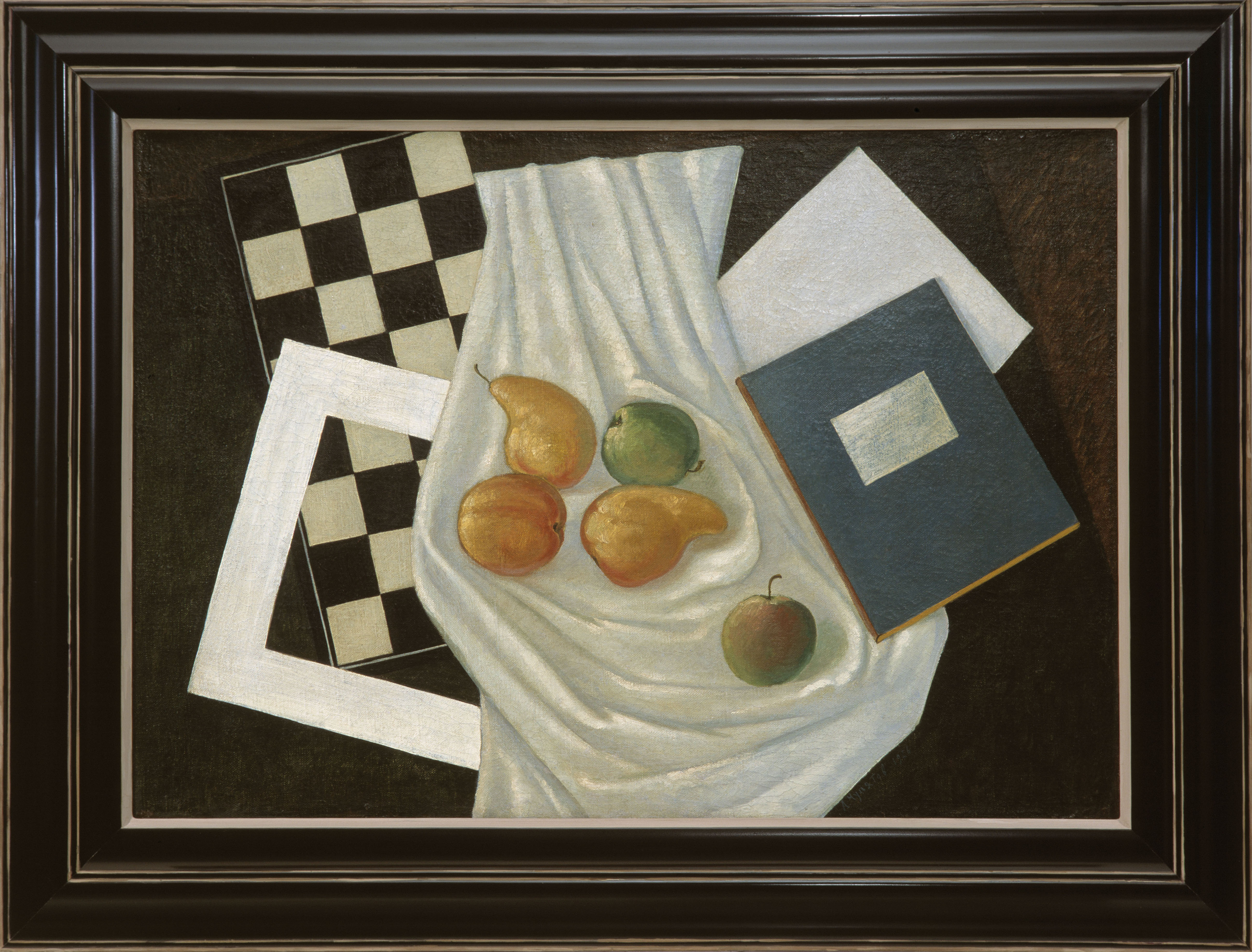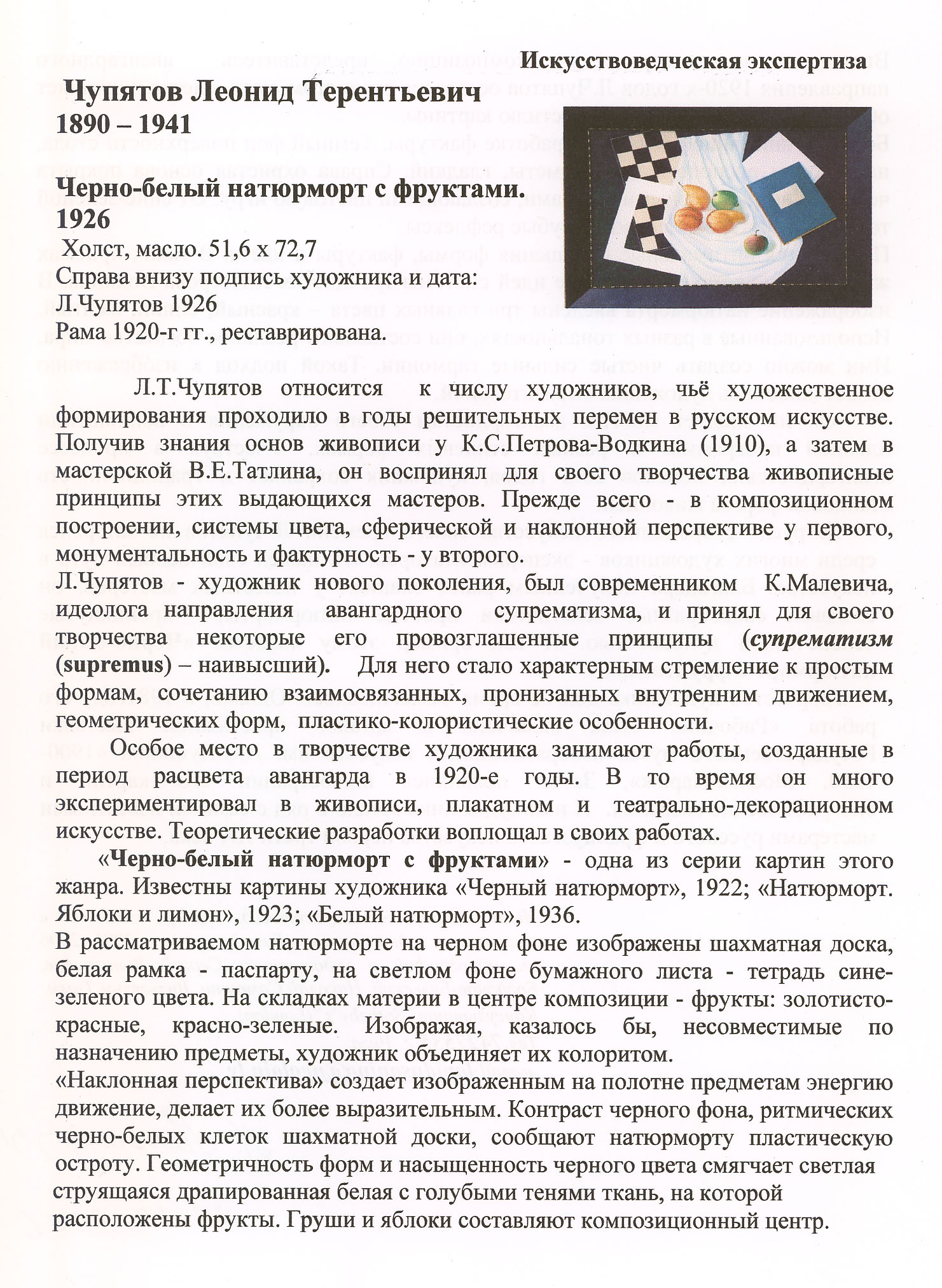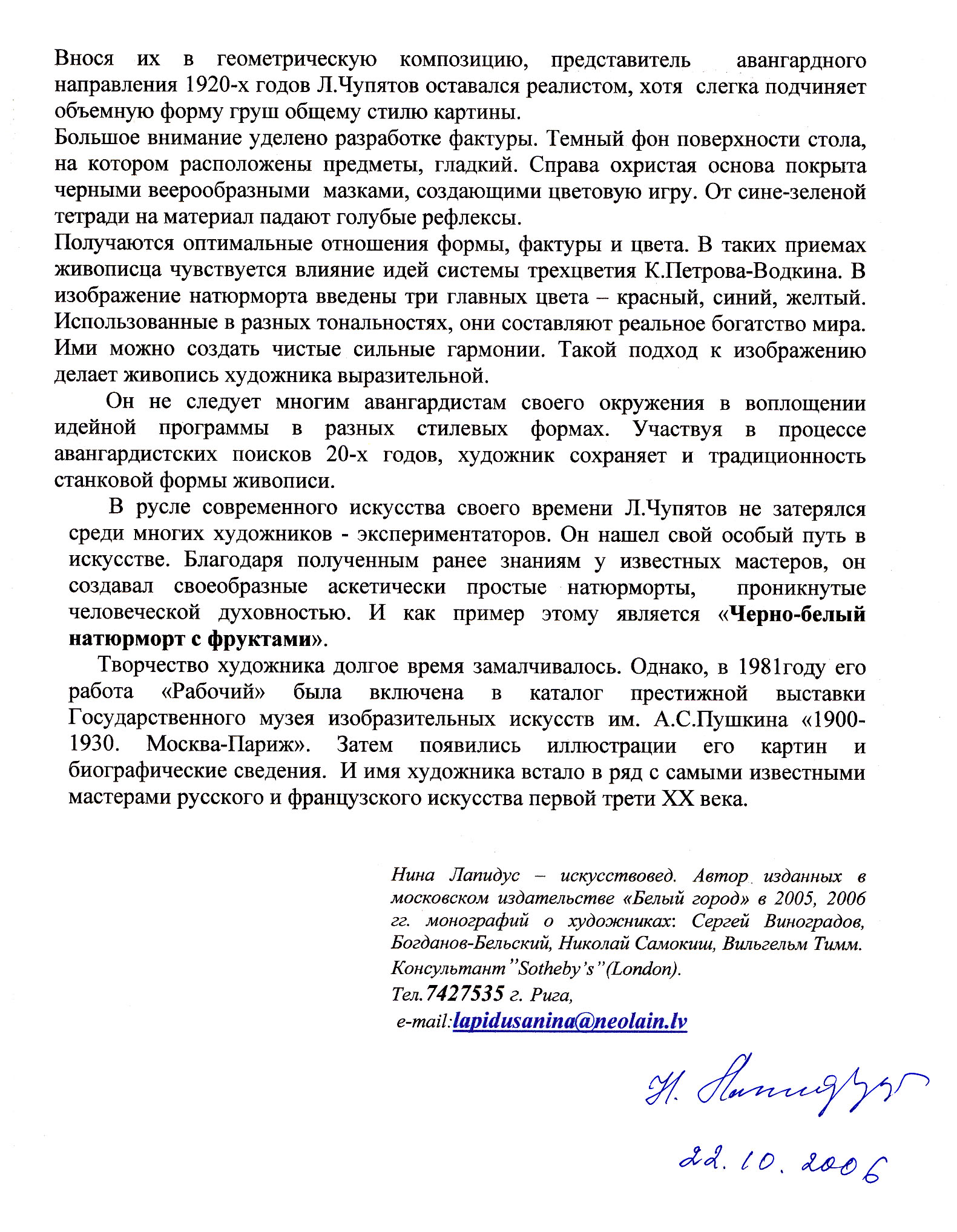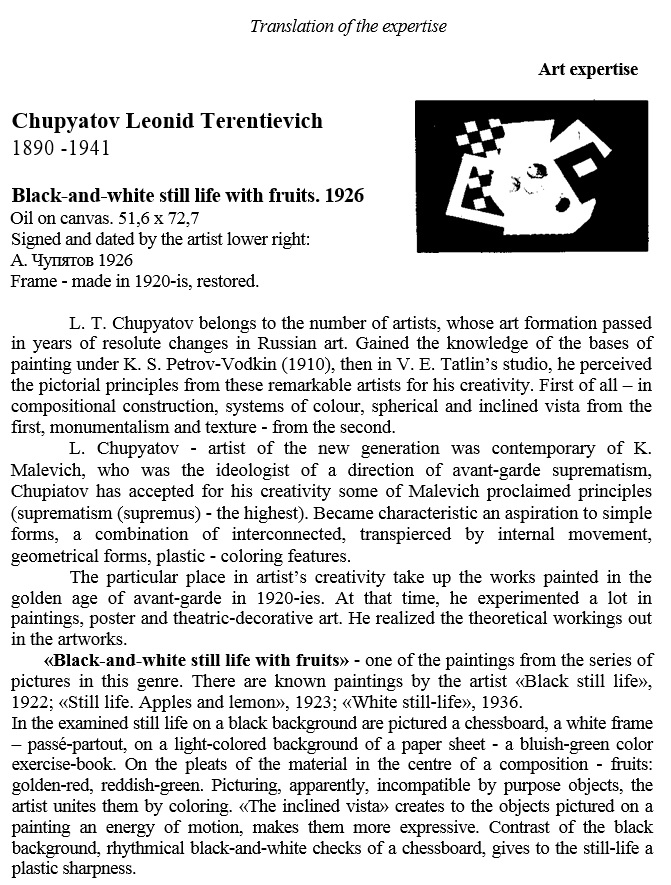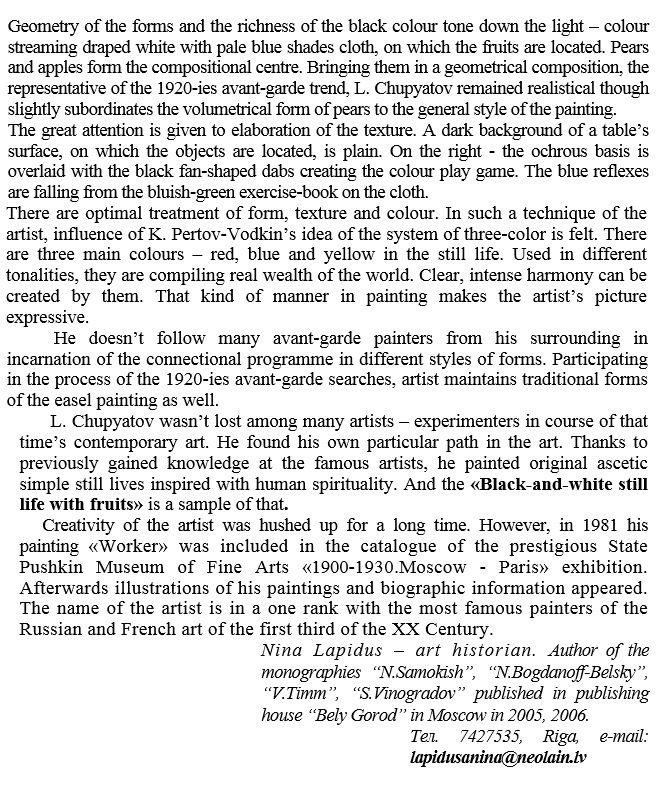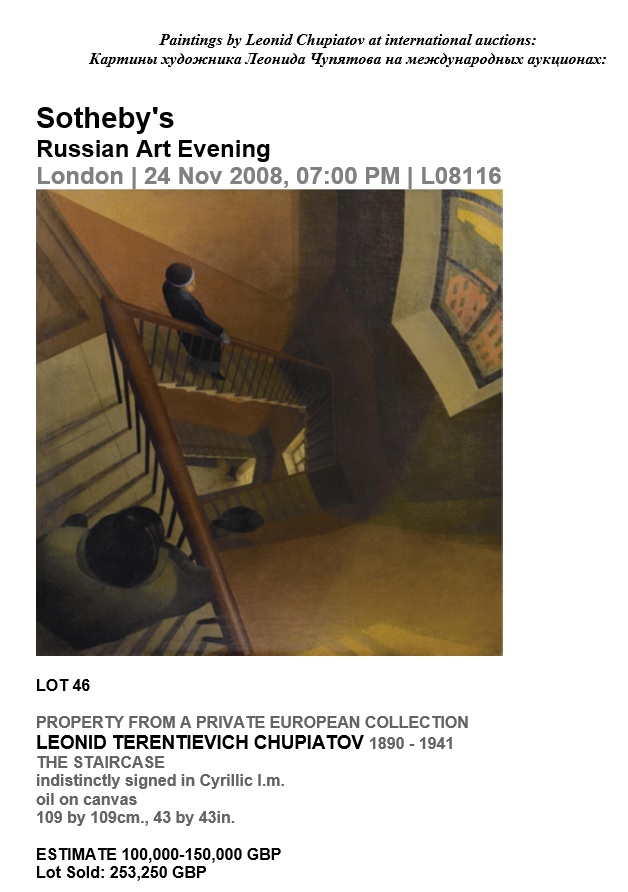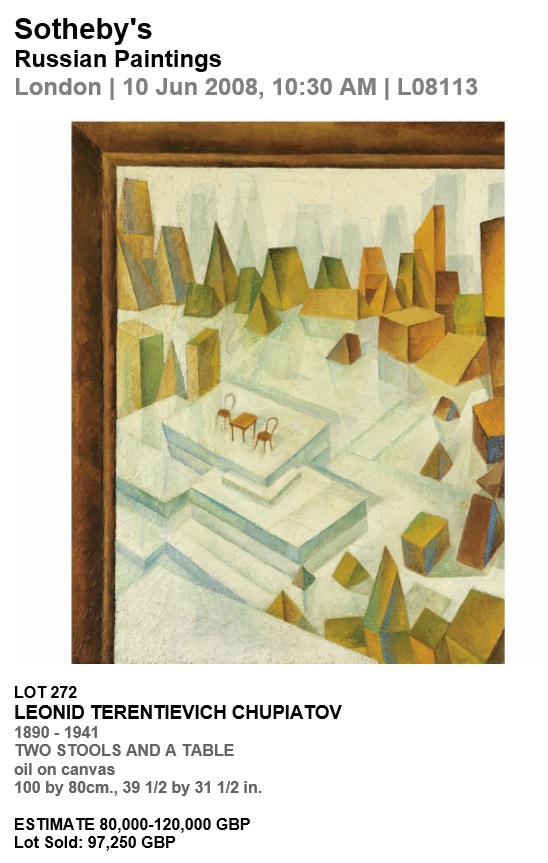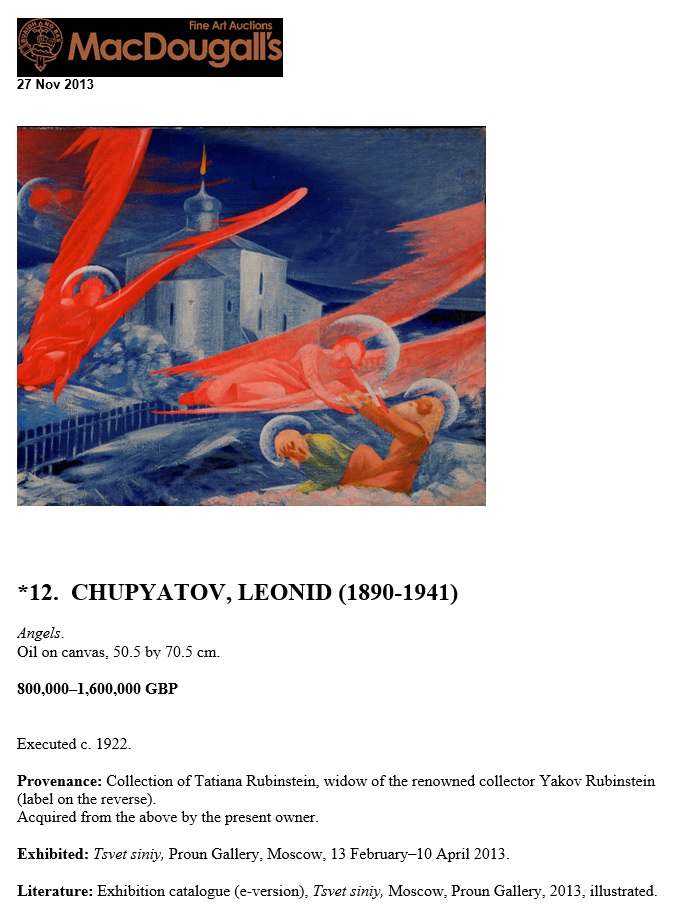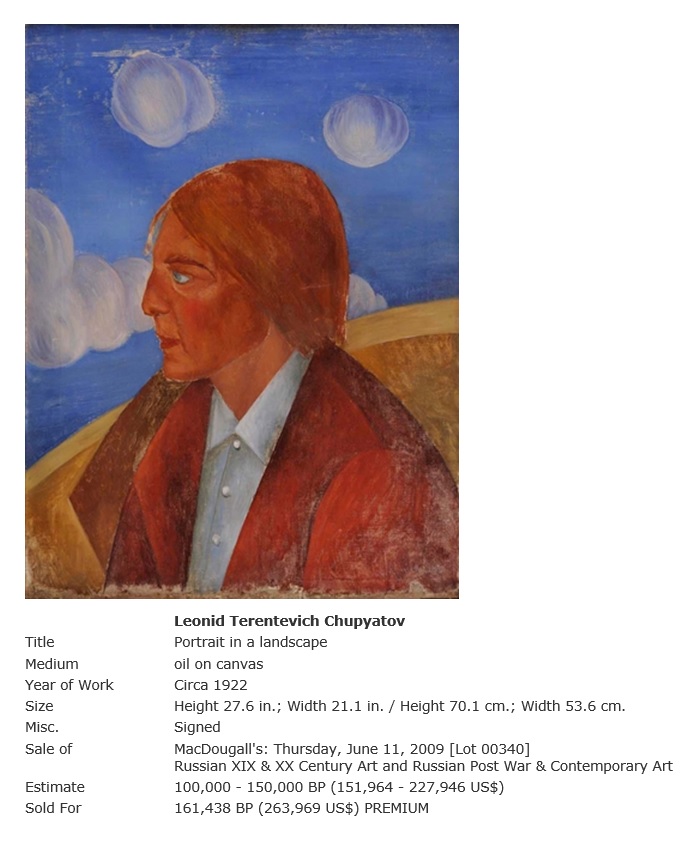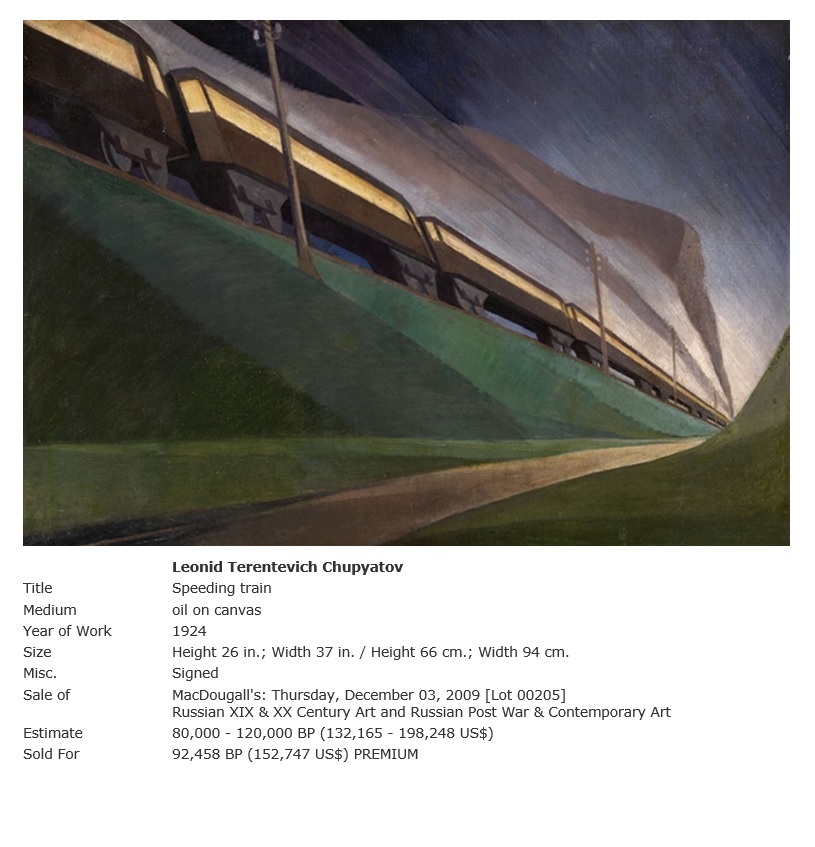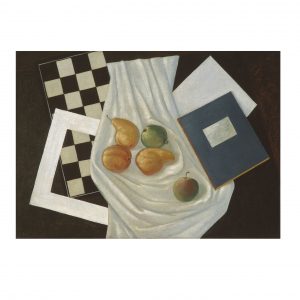CHUPIATOV Leonid Terentievich
1890 (St.Petersburg) — 1941 (Leningrad)
Famous painter, graphic artist, theatre artist, art theorist
An active member of the avant-garde movement during the 1920s and 1930s.
He was a student of K. Petrov-Vodkin and was strongly influenced by him.
Leonid Terentievich Chupiatov was born in St. Petersburg. He studied at the Drawing School of the Imperial Society for the Encouragement of the Arts in Peterburg (1909-1910), at the same time he visited art studios of M. Bernstein, E. Zvanceva, Y. Tsionglinsky (1909-1918). He continued his studies at Petrograd Free State Teaching Art Studios with K. Petrov-Vodkin (1918-1919). It was K. Petrov-Vodkin and his method that helped the young artist define his own path in art.
Leonid Chupiatov met Petrov-Vodkin back in the mid-1910s when the artist worked on new ideas for relation of color, form and space in order to achieve the new artistic expressiveness, and when the theory of spherical perspective was born. Petrov-Vodkin appreciated the seriousness and thoughtfulness of his student, he appreciated his interest in theoretical problems of art. Later, under the influence of the teacher, the individual style of Chupiatov is formed, his own vision of art.
From 1918 to 1919 he was an assistant in the art studio of V. Y. Tatlin.
Leonid Chupiatov worked in a Department of Scientific Research at VKHUTEMAS from 1921 to 1925. In 1926 he wrote an essay The Path of Genuine Realism in Art, which determines the specifics of the further development of art. The questions put forward by Chupiatov were important for the work of many painters – questions about the plane of the painting, about the laws of motion in nature and image, about the properties of the eye and its culture, about the ways of seeing objects, about the theme.
Chupiatov started to take part in exhibitions in 1916; he was a member of number of societies and he took part in their exhibitions: World of art (1916-1918), Zhar Cvet (1924), Obshina Hudozhnikov (1925-1929), Association of the Contemporary Artists of Ukraine (1928). From 1919 to 1922 he taught at different educational institutions of Novgorod, Kiev, Leningrad; from 1933 to 1941 he was a theatre artist and a consultant at the State Bolshoi Drama Theatre in Leningrad.
He cooperated with the publishing house IZOGIZ; he was the creator of propaganda posters which were made in a characteristic and recognizable manner: We are organising grain planting (1930), The question of food in Leningrad region (1931).
In the 1920s and 1930s formal and artistic approach was not common in propaganda art. And in the report For the Bolshevist Poster (1932) N. Bekker criticized Chupiatov’s poster We are organizing grain planting – „The poster is ideologically harmful. It is incorrect both politically and technically. It shows a tractor sowing a green field. It is unprecedented, sowing a green field. Actually what we have here is the artist who sows and he sows because he needs green color…“ …“Tractors sow forming a row, and it is not possible to sow like that. They stand still, they are not moving. The Red Army soldier is represented here as a fool, Red Army soldiers like that do not exist, he looks more like a mannequin, like a doll in a Swiss shop.“
L. Chupiatov left a big mark on Russian art. A. Borovsky wrote about the artist: Chipuiatov’s path is a lonely path, and his individual choice is especially appreciated for increasing collective consciousness. In the context of a general shift towards social realism, as well as a shift towards propaganda of atheism, not only his formal searches in the 1930s are admirable, but also his commitment to religious themes. Getting close to iconography and then distancing himself from it, by interpreting the canonical images in a modernist manner, he created piercing and exciting images of the Mother of God, angels, saints and the Saviour, with faith and the gift of a great artist, devoutly feeling and outliving the era. The apotheosis of the cycle was The Mother of God Protecting the Besieged City (1941).
During the war he stayed in Leningrad. He died of hunger with his family during the blockade.
Paintings and graphic works of L. T. Chupiatov are kept in the State Russian Museum, State Tretyakov Gallery, State Museum of St. Petersburg History, private collections. The artist’s poster is a part of a private collection in England.

